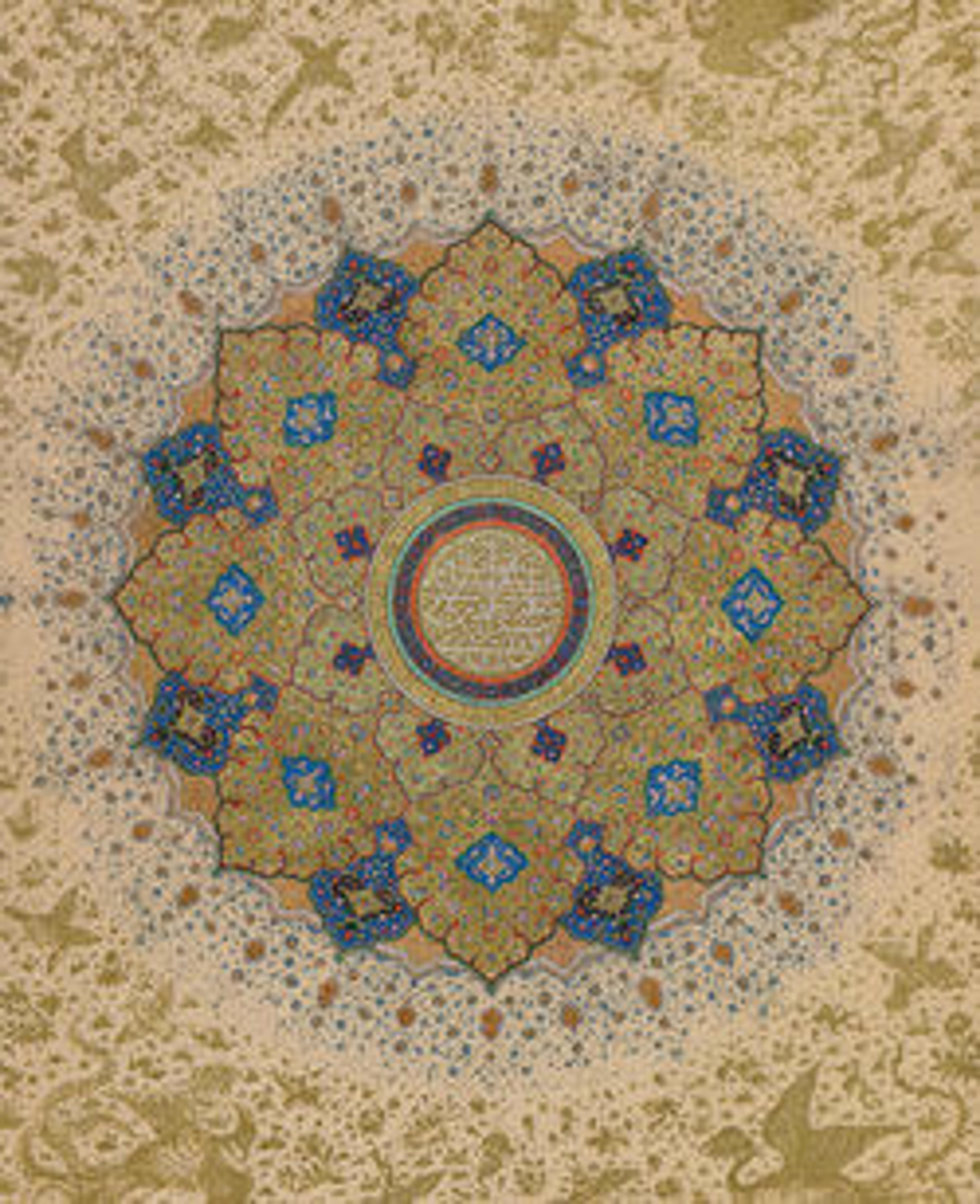Inkwell with Zodiac Signs
One of the innovations of the Khurasani metalworkers is the development of animated inscriptions, in which parts of letters are transformed into animal or human figures. Here, the tall letters of the inscription on the lid are embellished with human heads. The use of animated inscriptions traveled westward, appearing on metalwork produced in western Iran, Iraq, and Syria, but was never adopted in other media. The body of the inkwell is decorated with the twelve signs of the zodiac.
Artwork Details
- Title: Inkwell with Zodiac Signs
- Date: early 13th century
- Geography: Attributed to probably Iran
- Medium: Brass; cast, inlaid with silver, copper, and black compound
- Dimensions: H. 5 7/8 in. (14.9 cm)
H. w/o lid: 3 5/8 in. (9.2 cm)
Diam. 4 9/16 in. (11.6 cm) - Classification: Metal
- Credit Line: Harris Brisbane Dick Fund, 1959
- Object Number: 59.69.2a, b
- Curatorial Department: Islamic Art
More Artwork
Research Resources
The Met provides unparalleled resources for research and welcomes an international community of students and scholars. The Met's Open Access API is where creators and researchers can connect to the The Met collection. Open Access data and public domain images are available for unrestricted commercial and noncommercial use without permission or fee.
To request images under copyright and other restrictions, please use this Image Request form.
Feedback
We continue to research and examine historical and cultural context for objects in The Met collection. If you have comments or questions about this object record, please contact us using the form below. The Museum looks forward to receiving your comments.
